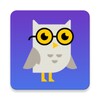The BraiSee app was developed to address the significant barriers faced by visually impaired individuals in accessing education and information. While Braille remains an essential tool for literacy among the visually impaired, its adoption and accessibility are limited due to a lack of effective and affordable tools for learning and translating Braille. According to the World Health Organization (WHO), over 2.2 billion people globally experience some form of vision impairment, with many relying on assistive technologies. However, these technologies often come with high costs and limited availability, particularly in low-income regions, exacerbating educational disparities and access to resources. Current challenges in the assistive technology ecosystem include the limited accessibility of Braille materials, the lack of interactive Braille learning tools, and dependency on expensive technologies such as Braille embossers and refreshable Braille displays. Many visually impaired individuals also depend on human assistance for tasks like reading printed materials or learning Braille. Existing apps like Seeing AI and Be My Eyes focus on text-to-speech conversion or providing assistance via video calls but fail to address the need for independent Braille learning and literacy tools
A review of existing technologies highlights the limitations of current solutions. For instance, the Angelina Braille Reader scans Braille documents and converts them to text but does not support real-time translation or learning tools. Similarly, Seeing AI provides text-to-speech and scene description features but lacks functionalities related to Braille, and Be My Eyes facilitates assistance but does not promote Braille literacy. Trends in assistive technology reveal a growing integration of machine learning and computer vision into mobile apps, alongside increasing demand for affordable solutions in low- and middle-income countries. However, gaps persist in the development of interactive Braille learning tools and real-time text-to-Braille translation systems.The development of BraiSee addresses these challenges by combining real-time text-to-Braille translation with voice feedback, enabling users to learn and access information independently. By promoting Braille literacy and bridging the gap between printed text and Braille accessibility, BraiSee offers a cost-effective alternative to expensive Braille devices, leveraging the widespread availability of smartphones. The app's localized approach ensures that it is tailored to regional needs and languages, making it particularly impactful in countries like Indonesia, where access to assistive technology is limited.
BraiSee aligns with global goals for inclusive education and technological empowerment, including the United Nations Sustainable Development Goals (SDGs). It supports SDG 4 by promoting equitable quality education and lifelong learning opportunities and SDG 10 by reducing inequality for people with disabilities. By focusing on Braille literacy, the app enhances inclusivity and fosters the social and educational
Requirements (Latest version)
- Android 7.0 or higher required

























Comments
There are no opinions about BraiSee yet. Be the first! Comment